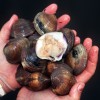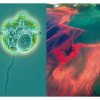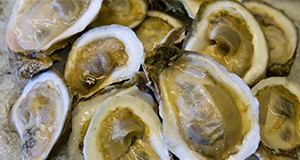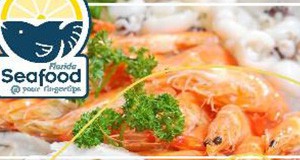This 10-page fact sheet written by Russel Dame, Leslie N. Sturmer, Charles M. Adams, Richard Weldon, and Kelly A. Grogan and published by the UF/IFAS Food and Resource Economics Department explains how to assess the risks involved with off-bottom oyster culture, a method allowing for growing oysters in mesh containers above the sea bottom where they are protected from predation and from becoming buried in sediment.
http://edis.ifas.ufl.edu/fe1070
Tag: Charles M. Adams
Seafood Knowledge, Perceptions, and Use Patterns in Florida: Findings from a 2013 Survey of Florida Residents
Over the past few years, consumers have begun to pay more attention to the nutritional benefits, sustainability, and environment impact of consuming seafood. However, media coverage of these concerns may leave consumers confused and uncertain about how they should incorporate seafood into their diets. In 2013, a survey was conducted to better understand Florida seafood consumer preferences, perceptions, and concerns. This 4-page fact sheet explains the survey’s findings and how they might help Extension deliver effective seafood-based education to Florida residents. Written by Lisa Krimsky, Charles Adams, and Bryan Fluech, and published by the UF Department of Food and Resource Economics, May 2015. http://edis.ifas.ufl.edu/fe965
Tracking the Economic Benefits Generated by the Hard Clam Aquaculture Industry in Florida
 The hard clam industry is a true success story for commercial aquaculture in Florida. From a cottage industry borne of reductions in commercial wild clam harvests in the Indian River Lagoon during the late 1980s, hard clam aquaculture has now developed into an industry that is rivaled by no other aquaculture food product in Florida. Although successful by virtually any metric, the risks and uncertainty associated with commercial hard clam culture has led to the evaluation of programs that help mitigate risk, such as the former pilot Cultivated Clam Crop Insurance Program administered by USDA Risk Management Agency. All of this alludes to the economic importance of the hard clam culture industry which, through the cultivation process and sales of products, generates local income and taxes, creates jobs and businesses, and draws new money into the local economy, as cultured hard clams are sold to non-residents and buyers outside the region and state. This 6-page fact sheet provides an overview of a recent study by the University of Florida to provide an estimate of the impact of the hard clam industry to the Florida economy. Written by Charles Adams, Leslie Sturmer, and Alan Hodges, and published by the UF Department of Food and Resource Economics, October 2014. (UF/IFAS photo by Tom Wright)
The hard clam industry is a true success story for commercial aquaculture in Florida. From a cottage industry borne of reductions in commercial wild clam harvests in the Indian River Lagoon during the late 1980s, hard clam aquaculture has now developed into an industry that is rivaled by no other aquaculture food product in Florida. Although successful by virtually any metric, the risks and uncertainty associated with commercial hard clam culture has led to the evaluation of programs that help mitigate risk, such as the former pilot Cultivated Clam Crop Insurance Program administered by USDA Risk Management Agency. All of this alludes to the economic importance of the hard clam culture industry which, through the cultivation process and sales of products, generates local income and taxes, creates jobs and businesses, and draws new money into the local economy, as cultured hard clams are sold to non-residents and buyers outside the region and state. This 6-page fact sheet provides an overview of a recent study by the University of Florida to provide an estimate of the impact of the hard clam industry to the Florida economy. Written by Charles Adams, Leslie Sturmer, and Alan Hodges, and published by the UF Department of Food and Resource Economics, October 2014. (UF/IFAS photo by Tom Wright)
http://edis.ifas.ufl.edu/fe961
Florida MarketMaker and Florida Food Connect: Using E-commerce to Enhance Seafood Marketing in Florida
 While the state and many non-profit organizations provide information to the Florida seafood and aquaculture industry to help them market their catch, they offer few resources facilitating e-commerce. As a business tool, e-commerce can help expedite the buying and selling of seafood products among consumers, producers, and other businesses within the food industry value chain. E-commerce is a new promotional strategy producers can use to improve their marketing efficiency. For example, the affiliated websites Florida MarketMaker and Florida Food Connect are designed to enhance the online presence for the Florida seafood industry. Web portals such as these increase the visibility of seafood businesses by allowing dealers to create a searchable online profile attracting more customers seeking locally sourced seafood. This 6-page fact sheet was written by Charles M. Adams and William Barker, and published by the UF Department of Food and Resource Economics, May 2014.
While the state and many non-profit organizations provide information to the Florida seafood and aquaculture industry to help them market their catch, they offer few resources facilitating e-commerce. As a business tool, e-commerce can help expedite the buying and selling of seafood products among consumers, producers, and other businesses within the food industry value chain. E-commerce is a new promotional strategy producers can use to improve their marketing efficiency. For example, the affiliated websites Florida MarketMaker and Florida Food Connect are designed to enhance the online presence for the Florida seafood industry. Web portals such as these increase the visibility of seafood businesses by allowing dealers to create a searchable online profile attracting more customers seeking locally sourced seafood. This 6-page fact sheet was written by Charles M. Adams and William Barker, and published by the UF Department of Food and Resource Economics, May 2014.
http://edis.ifas.ufl.edu/fe944
Economic Consequences of Harmful Algal Blooms: Literature Summary
 This 10-page fact sheet summarizes the existing literature that attempts to measure some of the economic consequences associated with harmful algal blooms and describes the methodologies, types and sources of data used, types of HABS examined, research gaps in previous studies. Was written by Sherry L. Larkin and Charles M. Adams, and published by the UF Department of Food and Resource Economics, August 2013.
This 10-page fact sheet summarizes the existing literature that attempts to measure some of the economic consequences associated with harmful algal blooms and describes the methodologies, types and sources of data used, types of HABS examined, research gaps in previous studies. Was written by Sherry L. Larkin and Charles M. Adams, and published by the UF Department of Food and Resource Economics, August 2013.
http://edis.ifas.ufl.edu/fe936
Strategies to Address Red Tide Events in Florida: Results of a 2010 Survey of Coastal Residents (FE891)
Residents in coastal communities might oppose programs for preventing, controlling, or mitigating the effects of these harmful algal blooms if they would increase costs to residents or would cause harm to other aspects of the marine environment. This 6-page report presents the results of a survey intended to help summarize public opinion, inform policy makers, and evaluate possible programs for use in Florida. Written by Sherry L. Larkin, Kristen M. Lucas, Charles M. Adams, and John Stevely, and published by the UF Department of Food and Resource Economics, April 2011.
http://edis.ifas.ufl.edu/fe891
FE835 Economic Impacts of Alternative Regulatory Scenarios on the Florida Fresh Half-Shell Oyster Industry: A Study of Potential Outcomes
FE835, a 3-page executive summary of a report by K.L. Morgan, T.J. Stevens, R.L. Degner, S.L. Larkin, and C.M Adams, summarizes the results of a study to examine the economic impacts of possible closures of the fresh half-shell oyster market for varying time periods with the intention of protecting consumers from Vibrio vulnificus infections. Published by the UF Department of Food and Resource Economics, June 2010.
http://edis.ifas.ufl.edu/fe835
FE711/FE711 Public Costs of Florida Red Tides, 2007
FE711, a 4-page executive summary by Kimberly L. Morgan, Sherry L. Larkin, and Charles M. Adams, summarizes Public Costs of Florida Red Tides: A Survey of Coastal Managers, a study which attempted to quantify public expenditures and procedures resulting from red tide-related management and mitigation issues. Includes references. Published by the UF Department of Food and Resource Economics, June 2008.
http://edis.ifas.ufl.edu/FE711

